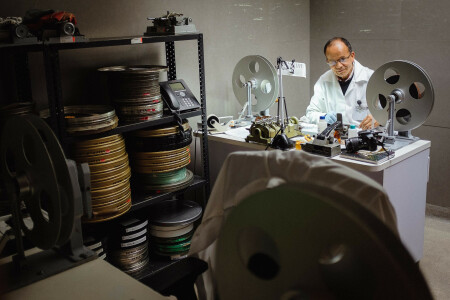Digitisation project for nitrate film
Nitrate film was the first carrier to be used for film content, and was produced as early as 1889. It was only in the 1950s that it became less popular and was replaced by acetate film. Nitrate is not susceptible to vinegar syndrome like acetate, but it is still very liable to decay and deterioration. We’re planning to digitise 85 films in 2022.
Challenge
Nitrate film (also known as cellulose nitrate or nitrocellulose) is a highly flammable compound that can spontaneously combust even without a heat source. And because it produces its own oxygen when it burns, unlike other materials it does not need any air to keep burning. The smoke that it produces is also extremely toxic. Furthermore, it can also be affected by chemical decomposition – a process that is irreversible, just like for acetate film. Even though nitrate films are the oldest films to be kept in archives worldwide, they will eventually perish forever, which is why they are in urgent need of digitisation.
This requires special measures: we are therefore providing special refrigerated transportation, and the digitisation company is taking meticulous precautions to digitise the film spools.

Pictured: painted nitrate film 'Halewijn', estimated 1929-1935, above the viewing table at Cinematek, film from the Letterenhuis collection, archive Anton van de Velde.
Our role
Just like for all our film projects, Cinematek is responsible for registering the films. They’re also taking action to conserve the films, such as replacing the film cans and adding new labels. Meemoo is drawing up the policies for this nitrate film conservation and registration, as well as coordinating the digitisation process, including procurement and collecting the films together from 15 content partners.
Approach
In addition to vulnerable film on acetate, nitrate film digitisation also fits within our efforts to digitise lots of other threatened and affected films before the end of 2023. We have developed a step-by-step plan:



